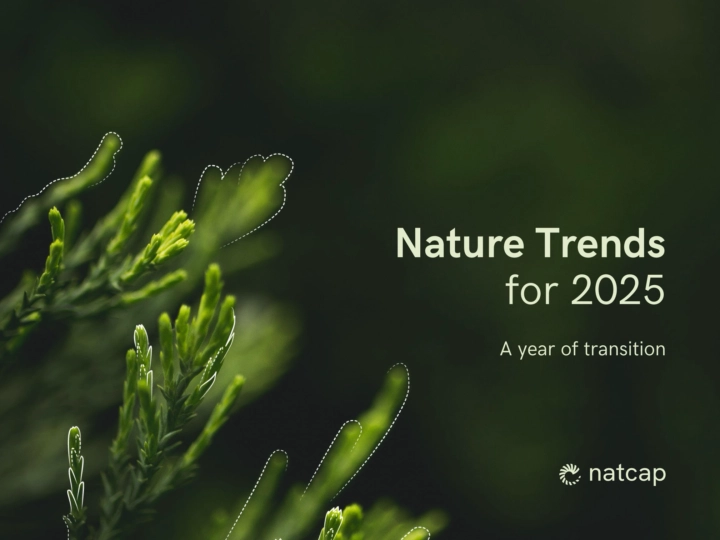7 Key Lessons for Starting Your Nature Journey: Insights from the Front Line
Nature is no longer just a “nice to have” on corporate sustainability agendas. It is fast becoming a core pillar of business strategy. From...

As biodiversity rises up the corporate sustainability agenda, so too does the alphabet soup of frameworks and standards designed to help companies act. The new ISO 17298:2025, the international standard for considering biodiversity in strategy and operations, enters this landscape with good timing, but not necessarily groundbreaking thinking.
ISO 17298 doesn’t rewrite the rules on corporate biodiversity action. Instead, it provides a structured process that will be familiar to anyone already navigating the CSRD, TNFD, or SBTN. It’s a helpful consolidation, rather than a radical reconsideration.
In this post, we walk through the standard’s core approach, flag what’s useful, and explain why ISO 17298 is best understood as another step in the evolution of sustainability-related frameworks.
ISO 17298 lays out a logical, phased approach to integrating biodiversity into business practice:
ISO 17298 starts with mapping out an organisation’s relationships with biodiversity - what it relies on, what it affects, and the risks and opportunities that flow from both.
What to Identify
ISO 17298 encourages organisations to take an iterative approach with the information and data available.
Identifying Material Impacts (Nothing Particularly New Here)
The standard encourages a qualitative or semi-quantitative assessment of impact materiality, based on criteria including:
Many of these dimensions will look familiar to anyone already working with CSRD or TNFD.
Risk and Opportunity Assessment
Here, the standard encourages organisations to identify physical, transition and systemic risks. To assess risks and opportunities, the standard suggests considering:
What’s notable, and slightly ambitious, is the suggestion to integrate financial implications into the analysis:
“The assessment of the magnitude of risks and opportunities should integrate an estimate of the financial implications…”
In practice, this will likely remain a light-touch exercise for many companies, especially given the complexity of quantifying biodiversity-related financial risk in early-stage assessments.
Link to Enterprise Risk Management
ISO 17298 goes further than some previous standards in explicitly calling for integration of biodiversity risk into enterprise risk management (ERM):
“Organizations shall develop an understanding of how to integrate them [risks and opportunities] into their existing risk management processes.”
This is arguably where ISO 17298 adds the most structure. It pushes companies to move beyond identification into formal planning, though again, the mechanics will feel familiar.
Define Your Ambition
Organisations are encouraged to articulate their ambition on a spectrum from:
This ambition-setting framework mirrors maturity models already used in climate and ESG strategies.
Set Objectives
The standard distinguishes between two types of objectives:
The standard outlines extensive criteria for objectives. For example they should be Specific, Measurable, Achievable, Relevant, and many others.
Plan Actions
For each objective, the organisation must define:
In other words: standard project planning disciplines are now applied to biodiversity.
In truth, ISO 17298 doesn’t break new ground. Most of the concepts - DIROs, materiality, action planning - are already embedded in other frameworks. What the standard does offer is:
But for organisations already deep into CSRD readiness or implementing TNFD-aligned assessments, ISO 17298 will feel more like a validation than a transformation.
Use ISO 17298 as a checklist or gap analysis tool. Ask:
If you're already reporting to CSRD or aligning with TNFD, this standard shouldn’t require a major rework. Instead, treat it as an opportunity to tighten internal processes, bridge silos between sustainability and risk teams, and ensure your biodiversity strategy is execution-ready.
ISO 17298 is a useful step in aligning business with nature. Its greatest strength is providing structure where confusion or fragmentation exists.
However, it seems like ISO 17298 could have better aligned and integrated other standards. For example, there is only 1 mention of TNFD and SBTN, none of CSRD, GRI and CDP.
This new standard risks adding to an already crowded regulatory landscape.

Nature is no longer just a “nice to have” on corporate sustainability agendas. It is fast becoming a core pillar of business strategy. From...

The European Financial Reporting Advisory Group (EFRAG) has released a draft update to the European Sustainability Reporting Standards (ESRS),...

2025 is poised to be a defining year for the corporate response to nature-related risks. With key reporting frameworks taking effect, global...